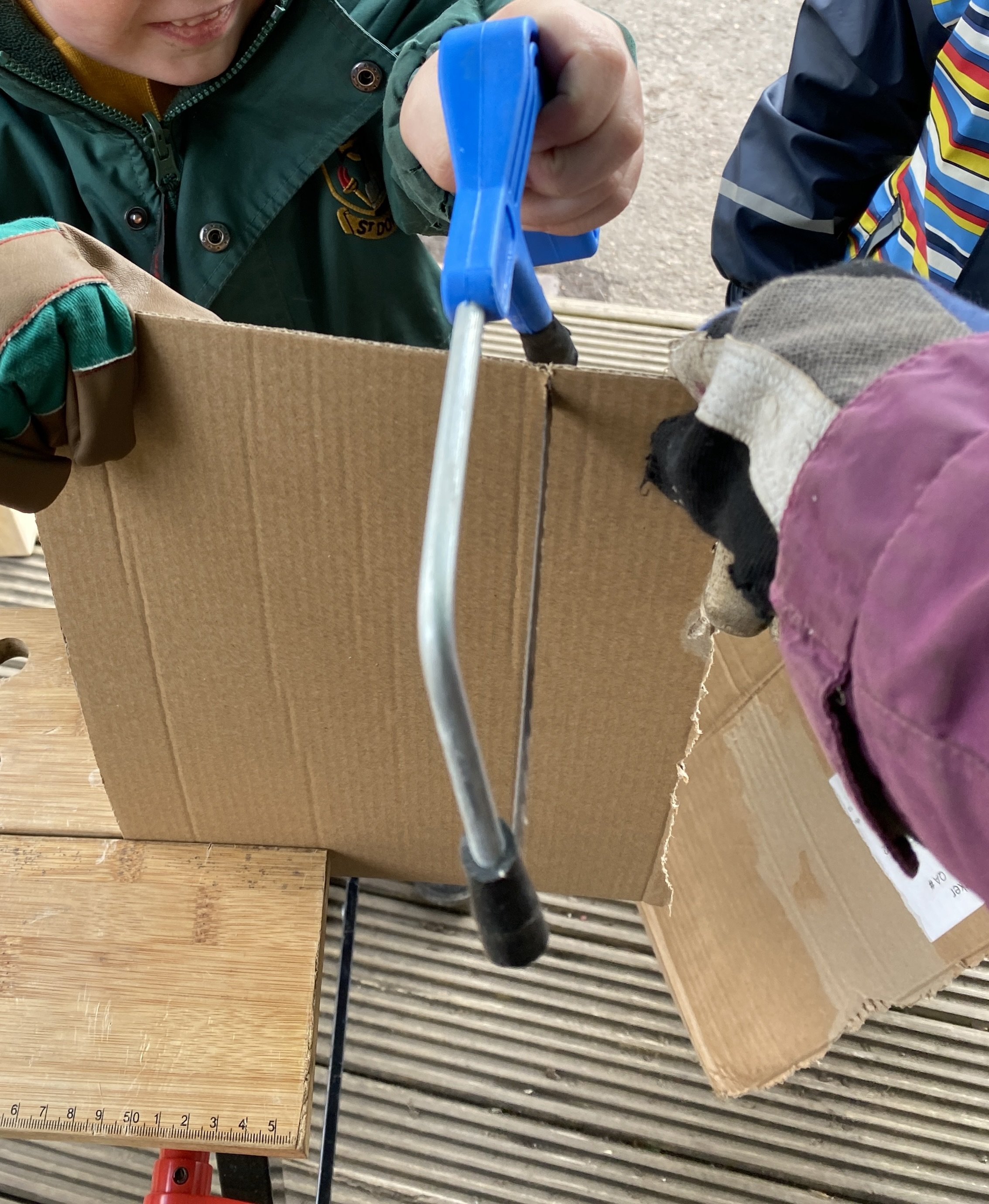Winter into Spring-Plant uses
This term not only have we built a poly tunnel to allow the children to grow a wider range of crops, we have also been exploring plants & fungi for their uses beyond food.
With the help of a couple of adults I built a polytunnel! - quite a task as no length of wood or aluminium runner was cut to fit! However, we got there in the end and P2/3 were straight in - planting our bi-annual crop of potatoes in tyres, decorating with Pansies and making planters for their chosen fruit and veg seeds.
Primary 3/4 explored how plants, wood in particular, can be used to make useful items. We have discussed in the past how different trees produce different densities of wood and different species are often used to make boats, buildings, furniture, containers etc. Today, we employed our well established wood working skills to make our own coat pegs using an Auger (a new tool to many).
Primary 5/6 explored all things birch. First we had to find one. We discussed how in the winter time it is hard to identify trees as they have no leaves and so we had to rely on bark. Luckily, silver birch is quite distinctive but we even identified a few others on site using our bark keys. Once we located our birch tree we tried taping it for nutrious sap (quite early in the season but it worked). We then explored its other uses: making anti fungal & anti-bacterial containers; a natural tinder for fire lighting, and we used it as paper writing on it- as it is also known as ‘the paper tree’ . Finally, we got a little side tracked exploring dogwood & willow as decorative features- mats and containers!
With perfect timing Wild Isles woodland episode on the abc had some amazing footage of fungi. P4/5 were looking at micro organisms and their uses. We therefore grew some fungi making soup with the produce. Next, we played top fungi trumps to learn some of the amazing attributes of fungi. After we got our ‘eye in’ with top trump cards we went on a fungi hunt around the school- finding quite a few bracket fungi. As micro organisms are so small - we set up a Yeast Bubble expansion experiment to get evidence the tiny yeast was alive as it breathed out carbon dioxide as it digested sugar. We also explored how fungi reproduce with spores making spore prints and re-enacting ‘catapult’ spore release. Finally, we made our own special fungus to take home.
For primary 7, we explored the use of plants in making dyes. The P7’s went foraging for vegetation that may make a good dye. We had looked at a long list of plants, flowers and vegetables that work. Once collected we lit a fire and cooked up red cabbage, beetroot, grass and willow bark etc. I had pre-prepared some cloth with a mordant and we then dyed our material with our chosen dyes. In addition, we whittled willow sticks (using the bark for dye) and then stained our them for ‘Harry Potter’ wands.
Finally, P1 were exploring their senses. We therefore investigated what happens when we remove or extend our senses. We did a smell test (no peaking to identify leaves - basil, mint and grass). Next, we, blindfolded ourselves and used our other senses to identify the route we took around the school grounds. We played a listening game and then used our eyes to solve a hide and seek challenge with a puzzle at the end. Finally, started to use tools (hacksaws, hand drills & dowels) to make our own junk model people making sure we put on ears, eyes, a mouth, nose and feet/hands.














































